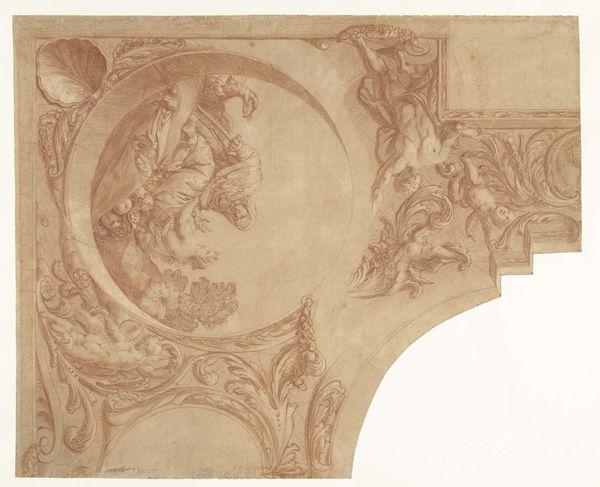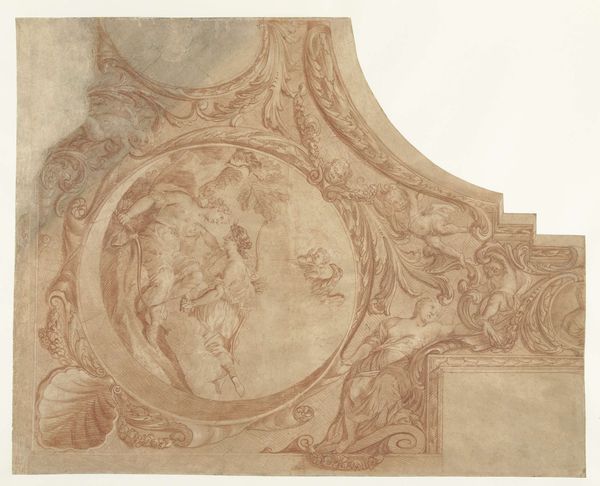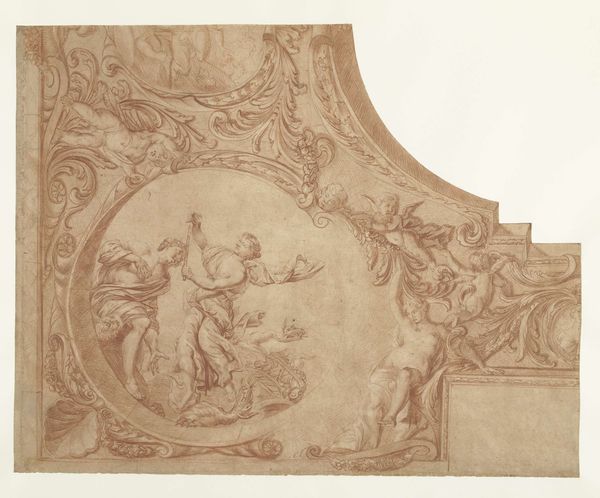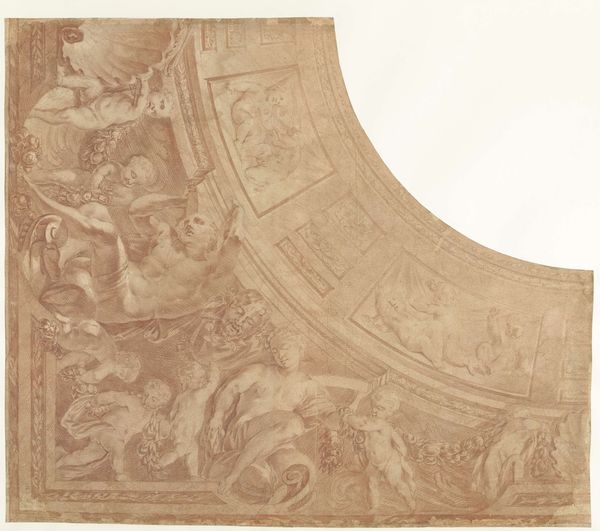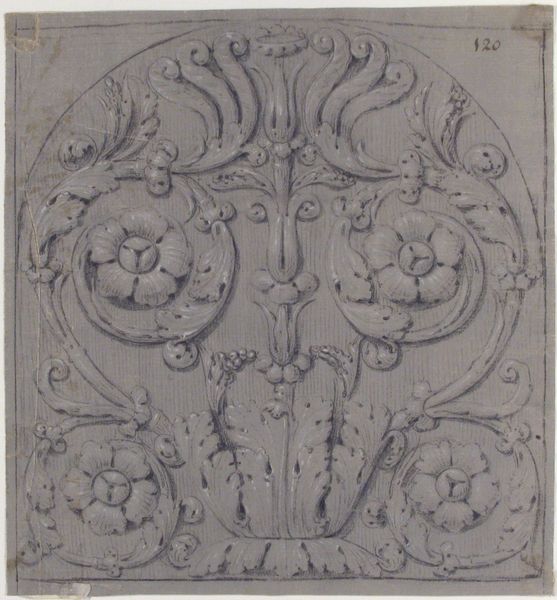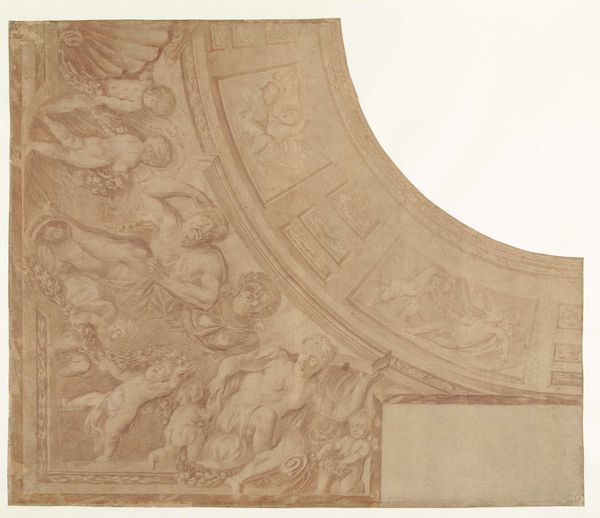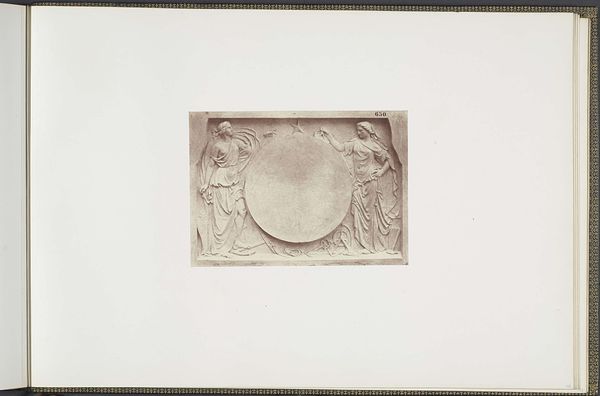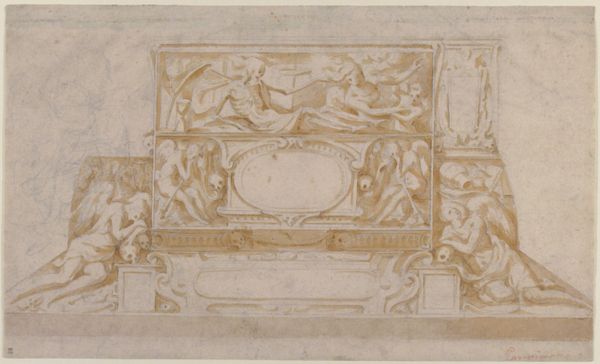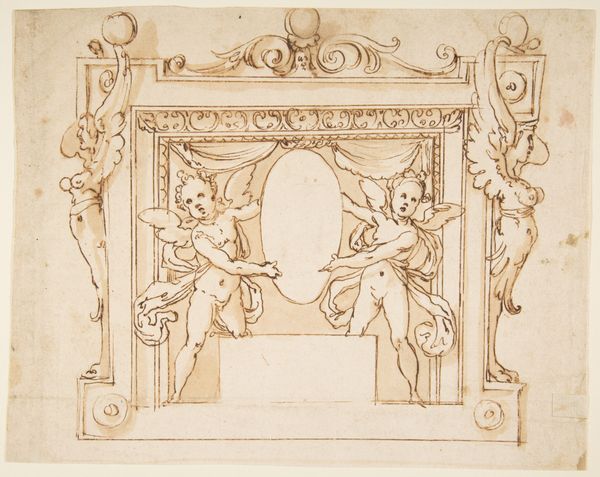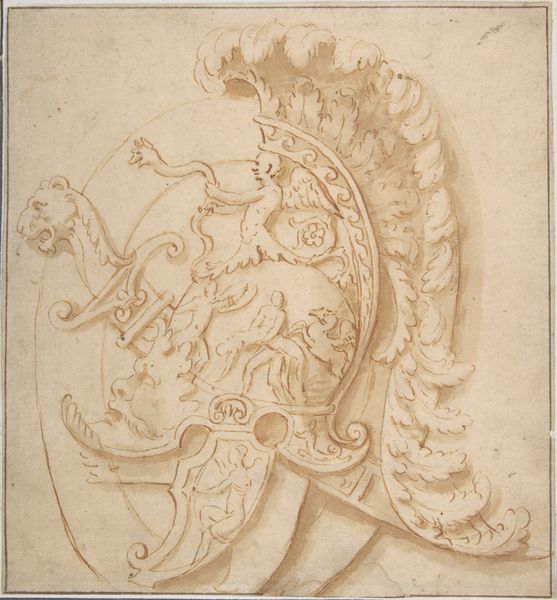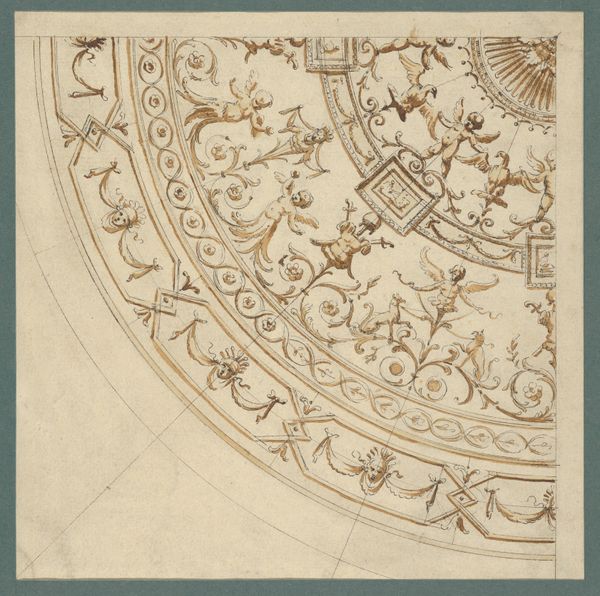
Soffitt Design with Anthropomorphic Couple and Putti (recto); Putto and Dolphin (verso) n.d.
0:00
0:00
drawing, print, paper, chalk, charcoal, black-chalk
#
drawing
#
allegory
#
baroque
# print
#
charcoal drawing
#
paper
#
charcoal art
#
chalk
#
charcoal
#
history-painting
#
charcoal
#
black-chalk
Dimensions: 264 × 458 mm
Copyright: Public Domain
Editor: This is “Soffitt Design with Anthropomorphic Couple and Putti (recto); Putto and Dolphin (verso)," an undated drawing by Jean Baptiste Louis Massard, created with charcoal, chalk, and black chalk on paper. I am struck by the dramatic contrast the artist creates using only these simple materials. What compositional elements stand out to you? Curator: Observe how the artist structures the composition, leading the eye through a calculated arrangement of forms. The triangular format acts as a proscenium, framing the anthropomorphic figures and putti. What does the symmetry or asymmetry communicate to you? Editor: I notice how the figures flanking the central oculus are similar but not identical, creating a dynamic tension. The artist uses line weight and shading masterfully to give the illusion of depth and volume. Curator: Indeed. The density of the charcoal defines the contours and mass. The choreography of the figures within the space creates a sense of movement. Semiotically, the putti are important structural supports that frame our interpretation of the characters. Consider how the design itself mimics that of structural support. Editor: That’s fascinating. It seems like the artist emphasizes the interplay between support and decoration, solidity and ephemerality, reality and illusion. It’s a lot to take in. Curator: By deconstructing the artistic elements—the lines, the forms, the contrast, and composition—we grasp the structure. Editor: It’s clear that analyzing those elements unlocks deeper meanings and shows how they all support one another.
Comments
No comments
Be the first to comment and join the conversation on the ultimate creative platform.
